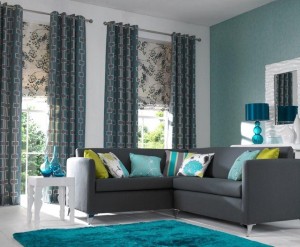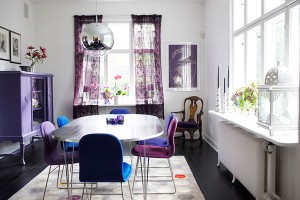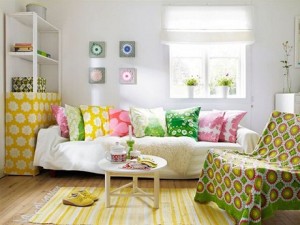We use cookies to make your experience better. To comply with the EU GDPR e-Privacy directive, we need to ask for your consent to set cookies. Learn more.
Creating a Colour Scheme for Your Home
 Image courtesy by: bykoket.com
Image courtesy by: bykoket.com
Creating a colour scheme for your home can be a time consuming process, as it takes a lot of research to choose the perfect one. Whether you are choosing a colour scheme for a single room or for your entire house, we understand that it is an overwhelming decision since the possibilities are endless and that's what we aim through this blog post; to make your decision easier.
Generally, colour is an important element when it comes to decorating. It is not as simple as choosing what looks attractive, or following the latest trends. In fact, it plays a vital role to our moods and perceptions and can have a profound effect in someone's behaviour. Just try to think how many times you have walked into a room or a house and sensed that something was wrong, but couldn't really tell where that feeling was coming from. Well, it probably had something to do with the colour. Hence, before you pick up the sleeves and start painting your home, take as much time as you need to define the mood you want to create for you and your family.
 Image courtesy by: freshome.com
Image courtesy by: freshome.com
Steps for creating a colour scheme for your home:
1) Create a mood:
Are you looking for a comfortable informal design or an eccentric and extremely modern design? Do you want to create a simple environment that gives you the feeling of spaciousness or a vibrant and lively space, loaded with many decorative objects? Would you like a peaceful and tranquil environment for you and your family or you prefer bright and cozy colours? Your own personal answers will help you to conclude in some basic colour tones for the decoration of your home.
2) Choose your colours:
 Image courtesy by: dailymail.co.uk
Image courtesy by: dailymail.co.uk
In case you don't know or haven't realize yet which are the colours you like most, a good solution that would help you to discover some of your preferences, is to notice your clothes, as well as many of your favourite items. Have a look at your wardrobe:
- What do you wear?
- What suits you best?
- Which colour you dislike most when buying new clothes?
These are the colours that your home can also wear. Additionally, absorb any image around you and realize what boosts your mood. Get inspired by one of your travels for example. Alternatively you could look for colour schemes into interior design magazines or websites. There are plenty of them nowadays.
Realizing which are your favourite colours, will help you to create the perfect colour palette, from which you will decorate your home.
3) Use a colour palette:
 Image courtesy by: bhg.com
Image courtesy by: bhg.com
This is one of the most important elements when creating a colour scheme for your home. Why? Because you will need to choose a set of colours that blend together harmoniously. And that's exactly what a colour palette is.
A good colour palette for beginners consists of three different colours:
- a dominant
- a secondary
- an accent colour.
In the language of interior design this is known as the 60% 30% 10% colour rule. This means that the amount of the three colours that you will choose, should not be equally divided. More detailed, the primary colour (60%) should be used for the largest surfaces of your house, such as walls or floors. The secondary colour (30%) should be chosen for your sofas, curtains etc. (upholstery), in order to create a visual contrast. Finally, the accent colour (10%) should give the final touch to the room. For instance: pillows, vases, paintings and other small decorative objects.
The aim here is to create a harmonious atmosphere without using many neutral colours, which would look boring.
4) Consider what is already in place:
 Image courtesy by: founterior.com
Image courtesy by: founterior.com
You can use your floors, furniture, paintings, carpets, curtains and other items that are already in place, in order to determine your colour palette and the quantity of each colour you'll use. Avoid choosing colours that have nothing to do with them.
5) Tips & Advices:
 Image courtesy by: hearthomemag.co.uk
Image courtesy by: hearthomemag.co.uk
- Dark shades visually reduce the space; thus you should avoid using them in small rooms.
- Use different shades of the same colour to achieve more harmony for your home.
- When using a bright colour for your walls such as red, is better to paint the roof white and buy your furniture in neutral colours, in order to create a visually larger space.
- The colours you will choose, should depend on the role that each room plays in your daily life.
Last but not least, choosing the perfect colours for your home is a personal matter, so go beyond the basic advices, don't be afraid to experiment with colours and face this procedure as a pleasant and creative challenge.

